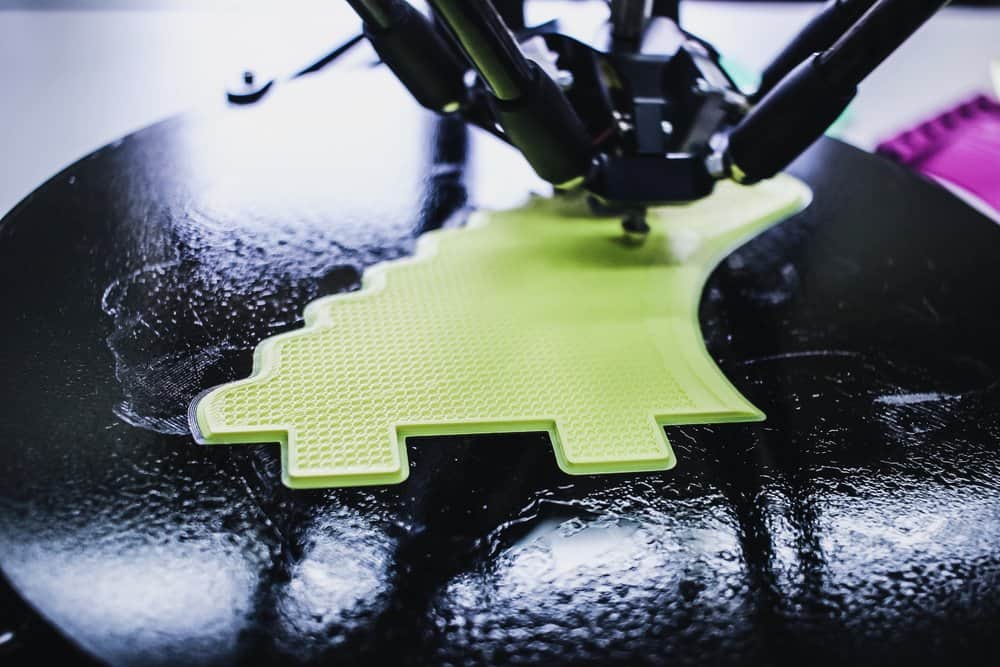
General Electric (GE), the global conglomerate has filed a patent application for using the technology of blockchain in validating and verifying 3D printed objects on their supply chain. The application which was filed in December 2017 and released by the U.S. Patent & Trademark Office last week, discusses methods for implementing a distributed ledger system into additive manufacturing, more commonly known as 3D printing.
Since time immemorial, manufacturing has largely remained a process that requires copious amount of resources – financial, land, and human capital. But with the concept of 3D printing coming into mainstream contention, manufacturing is no longer a process exclusively reserved to the select few. 3D printers cost a fraction of what conventional machines cost, but still can create molds with high precision and detail.
This has led to a situation where anyone with a 3D printer and a design blueprint could turn out products en masse and release it into the market. As the industry does not currently have a certification body that could regulate the quality of products being sold, it gets incredibly hard to handpick the good ones from the rest.
The significance of the situation grows when the products in question need to be used as replacement parts in industries. In a well-oiled mechanical process, sabotaging the quality of even a single moving replacement part would bring the whole industry to a halt. GE lists this problem to be one of its primary motives for the patent.
“Current systems for additive manufacturing lack verification and validation systems for ensuring that objects produced by the process are appropriately certified. If, for example, a replacement part for an industrial asset is possible to produce via an additive manufacturing process, any user with access to an appropriately configured additive manufacturing device can reproduce the part,” it said in the patent application. “End users who purchase or otherwise receive such a part [have] no way of verifying that a replacement part manufactured in this way was produced using a correct build file, using correct manufacturing media, and on a properly configured additive manufacturing device.”
GE proposes to solve this with the help of blockchain and the distributed ledger system, which would keep a record of the historical data on the additive manufacturing process with proper verification and validation of the devices used for 3D printing and the stakeholders who push the product along in the supply chain. GE believes that a tighter leash on the manufacturing process would help reduce counterfeit products and also introduce more transparency and visibility.
Then again, the 3D printing world is a pandora’s box waiting to be opened, and the GE patent would serve not just with the validation of mechanical parts, but also with niche manufacturing in segments like healthcare and food.
In healthcare, 3D printing is being used to print out bone replacement pieces and even intricate body parts like blood vessels. The food industry is also taking up technology on its kitchen table, using 3D printing as a way to create attractive looking food – looking to appeal both gastronomically and visually to its patrons.
This patent has far-reaching consequences and gives GE a headstart into the world of blockchain. So far, the company has been calculated in its approach towards this technology, having filed various blockchain-related patents concerning the aviation industry and has joined the Blockchain in Transport Alliance (BiTA) – a blockchain consortium looking to create open standards in the transportation and logistics industry.
Stay up-to-date with the latest commentary and insights on FreightTech and the impact to the markets by subscribing.











